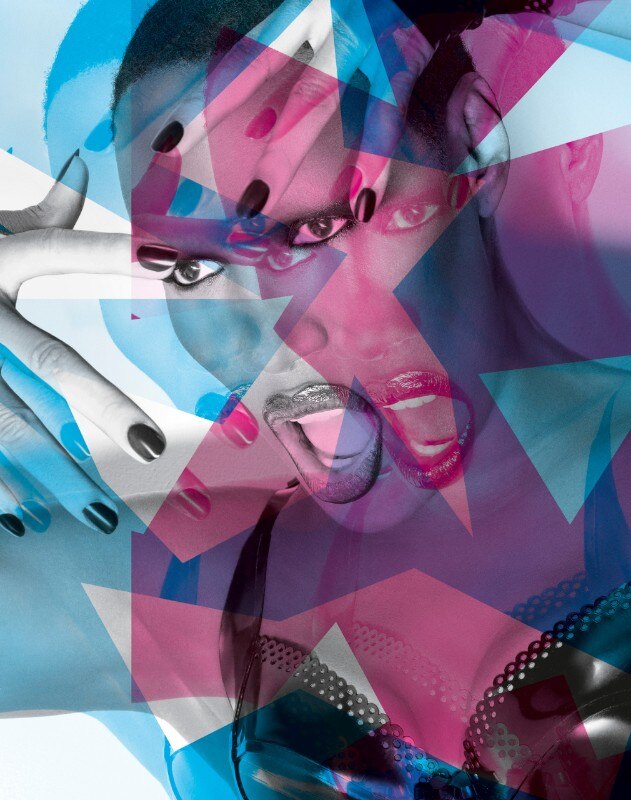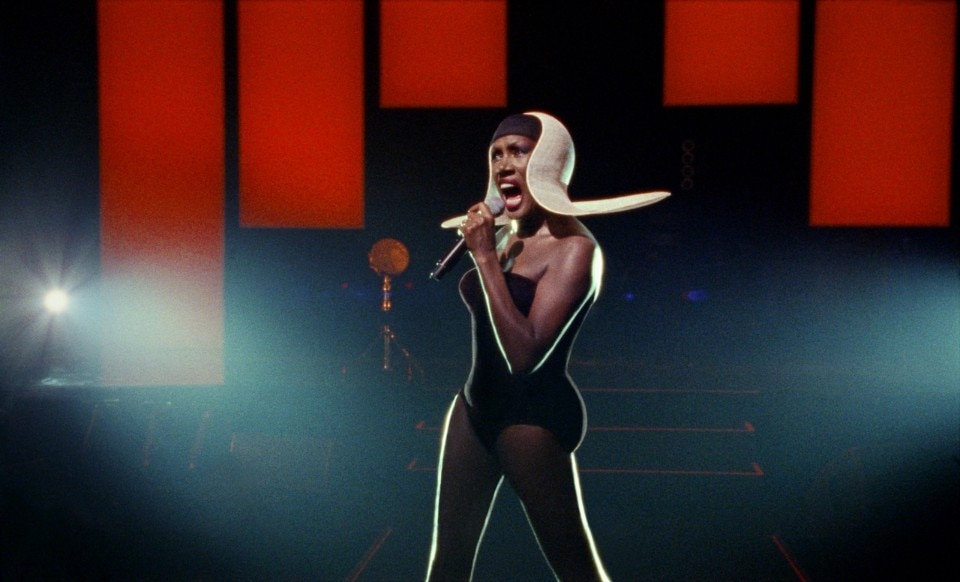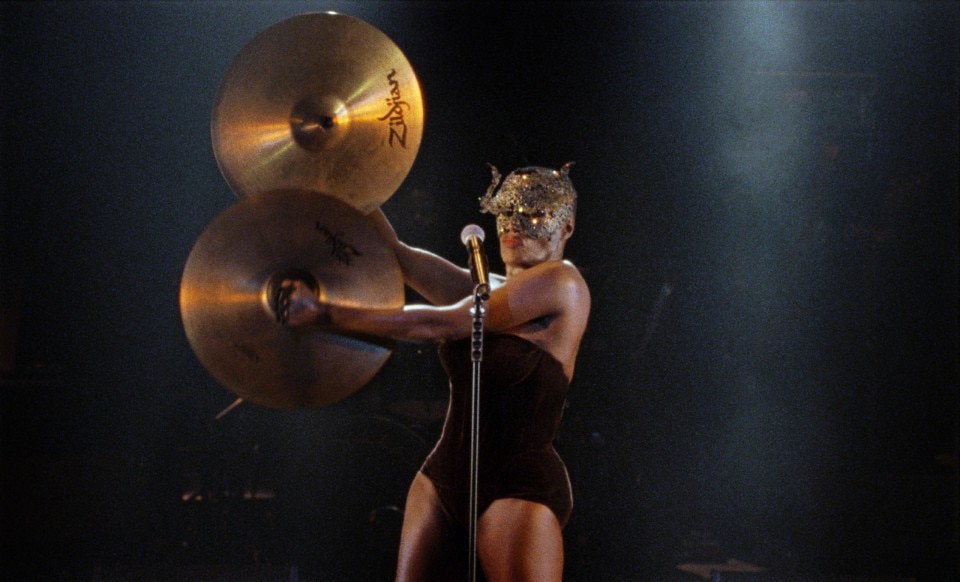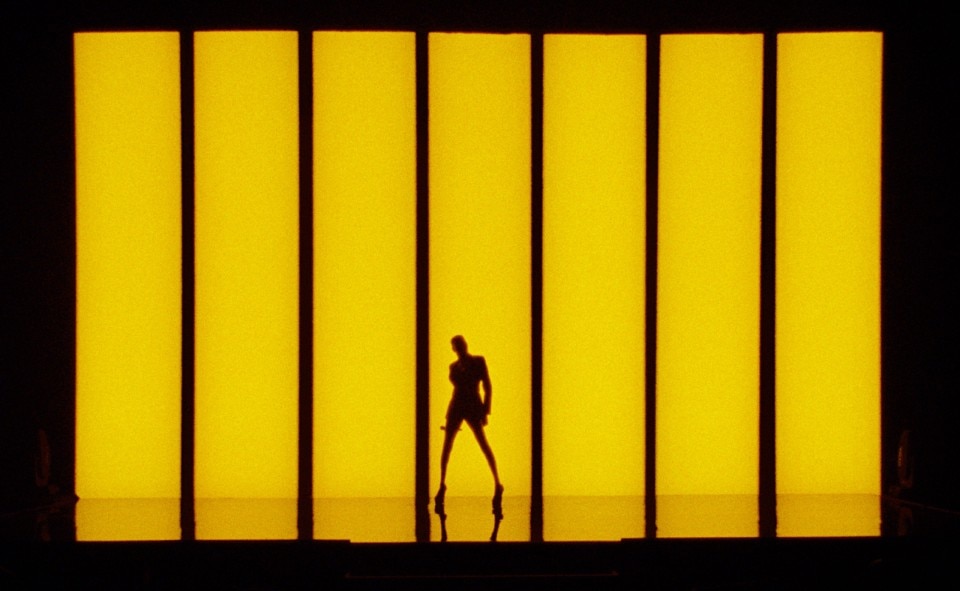There’s an almost subliminal image in the opening scenes of Grace Jones: Bloodlight and Bami: a Warhol-inspired plastic Marilyn hat peers forth from the hand luggage of Grace Jones, as she flies to her family of origin in Jamaica. That hat will reappear towards the end of the film, on the singer’s head, preceded by a trousse with a photo of herself and the King of Pop Art, most likely taken in the 1980s probably at Studio 54. Surprisingly enough, it’s the only picture from that time in the documentary, entirely dedicated to the present day of the former “Queen of Disco”.

Both objects are transitional, but also fetishes. Warhol epitomised those years when highbrow art, pop culture and gender bending all merged seamlessly. Grace Jones stood out – thanks to both her music and the revolutionary photography of her husband Jean-Paul Goude – as a key cultural figure, the perfect combination of glamour and radicalism. Besides, at the time it was easy to effectively blend hedonism tinged with a Reaganite ethos and the most extreme lifestyle statements – for examples, artificiality and body modification (deconstructed photomontages that create a distorted image of Jones’s body, in all poses possible). That time has forever come to an end. Then we see a roadie while reading an essay by Chomsky in a suite in Paris.
Sophie Fiennes, the director of this film and of two lovely perverse guides on the ideology and cinema of Slavoj Žižek, is surely no newcomer to psychoanalysis and Marxism when she creates a documentary where Grace Jones acts like a ghost in an abandoned haunted house, forced to eternally replicate a compulsive ritual with oysters and champagne as simulacra or performances of La vie en rose surrounded by coquettish dancers in a French TV studio that’s more squalid than the worst one at Mediast. But she rebels. She doesn’t want to come off as a madam, but we all know that ghosts are locked into repetition. In fact, the theme here isn’t heading off into the sunset, or the celebrity who decides to retire along with all her ghosts. Instead, Grace Jones appears, especially in the family sequences, happy and lively as never before. She is the one who plays the ghost while crossing the Champs-Élysées in taxi and remarking “there was more partying in Paris in the old days”.

The alliance between glamour and the processes of liberation and emancipation was definitively dead and buried by the economic crisis. The singer’s performances (from a concert in Dublin shot specifically for the film) while dressed in a tight-fitting black body and a hat that resembles a nun’s veil may seem like an attempt to keep up with the “provocations” of Lady Gaga and the latest Pop star generations – obviously, only if we don’t consider that it was Grace Jones who practically invented Lady Gaga and all the others. Curiously enough (or maybe intentionally?) the scenes shot in Tokyo literally call to mind Lost in Translation by Sofia Coppola; actually, there’s that same feeling of being a fish out of water while visiting a foreign country where no one understands you. This disorientation is expressed with great effectiveness also by the randomness of the places and non-places, like airports, luxury hotels and nightclubs that populate the documentary, as they are juxtaposed without any continuity, unequivocal indications or temporal, disconnected hierarchies. Are we in Barcelona, or New York? Is this a one-way trip in search of bami (meaning bread, substance or roots in the local Jamaican dialect), using alternate editing with a tour of the “bloodlights” (red studio lights), or of various different visits?

At a time when the rock star biopic genre is thriving, with varying results (among the most intense is the diptych 20,000 Days on Earth and One more time with feeling dedicated to Nick Cave), Sophie Fiennes achieves her goal of portraying Grace Jones and, on the side, the speed of cultural cycles. It would be a particularly unoriginal endeavour if she, the centre of attention, disappeared instead of continuing forward. We approach Bloodlight and Bami looking for an icon, and we find something more or less commercialised, more or less a serial portrayal. In the meantime, as the film unfolds, we grow fonder of the survivor.

In this sense, we could refer to the masterpiece Grey Gardens, filmed in 1975 by the Maysles brothers who revolutionised the documentary genre. When Grace Jones, naked or clothed in fur, feasts on oysters and champagne in the imperial suite overlooking the Tuileries and repeats to herself she is still able to electrify an audience just by her stage presence, we are reminded of Little Edie’s soliloquies as she is holed up in the derelict villa in East Hampton, reminiscing about her gilded youth. The level of empathy and closeness to the subject is so similar that laughing about it would be unforgivably cynical. The difference is that Grace Jones abandons the haunted house, travels to Jamaica, reconstructs her childhood and is able to identify the reason for her own masculine and aggressive look (“scary, dominant, male”) in her need to exorcise the abusive, military and fanatical behaviour of her adoptive grandfather. She doesn’t merely look back nostalgically, but instead keeps the past at a critical yet ironic distance. In this documentary, Grace Jones is split in two: as a function of cultural dialectics, perhaps she represents something vanquished or left to her own devices, like the Bouviers in Grey Gardens, the survivor of one of many hard endings. At the same time, as a woman she cannot but appear to be the splendid seventy-year-old we all can’t help but love.
- Film title:
- Grace Jones: Bloodlight and Bami
- Director:
- Sophie Fiennes
- Year:
- 2017



















